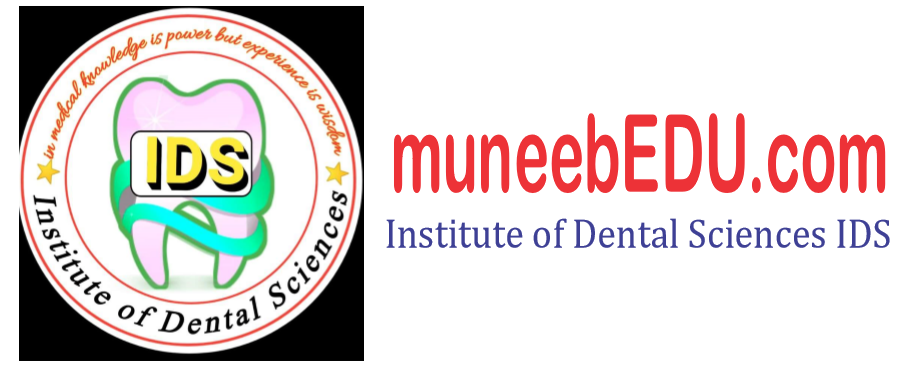Clinical Anatomy General Orientation.
It is essential for the Medical & Dental Students to know about those terminologies that describes the specific regions of the body. It is impossible for the students to describing composition of the body without these terminologies. These terms are also very helpful for the Clinicians so that they easily found anatomical abnormalities on clinical examination of a patient. These terms allows medical personnel to communicate with their colleagues internationally or nationally. Without these terms,
- Abnormal Functions of Joints,
- Actions of Muscles of different parts of body,
- Alteration in the Position of Organs,
- Exact location of Tumors/swellings,
cannot be accurately discussed or recorded. So, knowledge of Anatomical Terminologies is very important for All Medical and Dental Professionals. Lets start our Article About These terminologies. This Article is written by Dr. Muneeb Ali (Dentsit).
Terms Related to Position:
Spatial orientation and Organization are very important concepts in anatomy. All descriptions of Human Body are based on the Conventional orientation/ references postures termed as " anatomical position ". In this references , A man is standing in the following positions;
- A person is standing erect ( کھڑا کرنا) and facing forward.
- Upper limbs are by the sides.
- palms of hands are directed forward.
- Lower limbs are together,
- Soles of Feet are on the ground,
- Toes are Pointing forward.
All the Directional and Movemental descriptions are on these based ( Positional Based).
Median Plane:
it is a vertical plane passing through the center of the body and divide it into two equal parts/ halves ( right and left ).
Sagittal Plane:
Any plane that is parallel to the median plane and divide the body into unequal portions ( unequal Right and Left ).
Coronal Plane/ Frontal Plane:
It is a vertical plane that is situated at a right angle to the median plane and divides the body into Anterior and Posterior part. Anterior means " Frontal portion " and Posterior means " Back portion ".
Horizontal Plane:
It lies at the both planes ( Median and coronal plane ) and divides the body into Upper part and Lower Parts.
Transverse Plane:
It lies at the Perpendicular to the long axis of the given structure and then divide that structure in a cross-sectional orientations. The term " Transverse " & " Horizontal" Planes are often used transposable. However, they are not necessarily equivalent.
Important Notes:
- Terms Ventral ( Anterior ) and Dorsal ( Back) are used to indicate the Front Portion and Back Portion of the body.
- e.g. Nose is on the Anterior side of the Head and The Buttocks is on the Posterior side of the body.
- Term " Plantar Surface" refers to the sole of the foot and " Dorsal Surface " is the Upper/ Top surface of the the foot.
Medial Surface:
Structure that is situated near to the median Plane of the body than another is said to be as Median to the other.
Lateral Surface:
Structure that is farther away from the Median Plane than another is said to be as Lateral to the other.
E.g. ( in Head, Eyes are Lateral to The Nose and Nose is Mesial to the eyes).
Superior:
Terms Superior also known as ( Cranial, Cephalic ) denote the High level with reference to the upper end of the body. ( e.g. Head is superior end of the body).
Inferior:
Terms Inferior also known as (Caudal ) denote the Lower level with reference to the lower end of the body. ( e.g. Feet are at the inferior end of the body).
Proximal Position:
It is closer to the core. ( e.g. Shoulder is Proximal to the elbow)
Distal Position:
it is away from the core. ( e.g. Hand is Distal to elbow).
Superficial Position:
it is closer to the surface of body. ( e.g. Skin is superficial of ribs).
Deep Position:
it is farther away from the Surface of body. ( e.eg. Heart is deep to ribs).
Internal and External:
it refers to the " inside in structure/ location". ( e.eg. Thoracic cavity is an internal space).
External:
it refers to the " outside from Surface/Location". (e.g. Skin is external).
Ipsilateral:
It is on the same side of the reference point. ( e.g. Right eye is ipsilateral to right ear).
Contralateral;
It is on the opposite side of the reference point (e.g. Right is contralateral to the Left Ear).
Supine Position:
When body is lying on the back side.
Prone Position:
When body is lying on the facing forward.
Afferent:
Flow towards the Reference point.
Efferent:
Flow away from the Reference Point.
( Venous Blood Flow is Afferent to Heart and Arterial Blood Flow is Efferent to the Heart).



0 Comments